To keep that freight moving east, the railroad also received 65 4-6-6-4 Challengers from Alco in the early 1940s through World War II. These locomotives were improved versions of the Challengers first developed by UP and Alco in the 1930s.
The Challengers and Big Boys were simple articulated locomotives. (The term “simple” refers to both front and rear engine using high-pressure steam, unlike a slow-speed “compound” or “Mallet” type that recycled the exhaust of one set of high-pressure cylinders into larger low-pressure cylinders.) The improved Challengers could reach passenger train speeds of 80 mph. A Big Boy produced its maximum 6,290 hp at the fast freight speed of 41.4 mph.
The UP’s adoption of turbine-electric and diesel-electric locomotives shortened the careers of both Big Boys and Challengers. However, several examples of each steam locomotive type have been preserved. Challenger no. 3985 remains part of UP’s historic steam fleet and is the largest operational steam locomotive in the world. It’s also been recently announced that UP plans to restore Big Boy no. 4014.
The model. As noted in the earlier reviews, the plastic models match drawings in the Model Railroader Cyclopedia: Vol. 1, Steam Locomotives (Kalmbach Publishing Co.). The main discrepancy between the model and the prototype involves the articulated frame. On prototype articulateds the rear engine was rigidly attached, and only the front engine moved from side to side on a hinge between the rear cylinders. On the Athearn models both the front and rear engines swivel to allow the locomotives to negotiate tight curves.
Rivet seams and boiler bands are cleanly molded on the plastic boilers. Separate parts include the whistles, handrails, and safety valves. There’s clear glazing in all the cab windows.
The lettering is straight and includes the correct Harriman classifications under the cab numbers on both locomotives. Challenger no. 3977 features the 2-tone gray paint scheme that was correct for its prototype between 1946 and 1951 when it worked in passenger service on the UP Northwest District.
A drawbar and wiring harness permanently connects each locomotive and tender. The decoder and a downward- facing speaker are housed in the tender.
New sound system. Impressive considering its 15mm speaker, the N scale Challenger and Big Boy sound almost as good as their SoundTraxx equipped HO scale cousins. To my ear the chuffs and the whistle are an improvement over those of the first MRC-equipped releases and sound more like prototype recordings I’ve heard.
On our DC test track, the sounds came on at 5.5 volts, including the air compressor. Effects on a DC layout are limited – 4 exhaust chuffs per wheel revolution as I advanced the throttle, and I heard squealing brakes when I decreased the throttle. The bell sounded when each locomotive moved under 5 scale mph.
The earlier MRC-equipped versions included a 6-button remote for triggering sound effects on a DC layout. The SoundTraxx version relies on the power pack’s direction switch to trigger some effects. I triggered a grade-crossing signal by quickly flipping the direction switch when the locomotives moved forward. Whistle signals sound when the locomotives move forward (two blasts) and backward (three blasts). I found these less useful, since on the prototype the engineer would sound the signal before a locomotive was in motion. These automatic effects can be shut off, but to do so requires a DCC system or DC sound controller like the MRC Tech 6.
The SoundTraxx decoder has 10 user-triggered functions instead of the 28 available on the MRC decoder. The most useful sound functions are still there, including the bell, whistle, and coupler crash. There’s also an injector effect and a water-stop sequence. Many of the function keys can be remapped according to the user’s preferences.
When I turned on the headlight (function 0) I heard the whine of the generator. This effect was a bit loud in comparison to the other sounds, but not to worry. One of the most useful features of the SoundTraxx decoders is that it allows the modeler to control virtually every aspect of the locomotive sound. The volume level of each sound effect is adjustable. There’s also a 7-band equalizer and reverb control.
Function 9 triggers squealing brake sounds and can slow a train when configuration variable (CV) 61 is programmed. This train brake feature is useful for slowing down a train with a lot of momentum programmed into it. The braking rate is adjustable, but if it’s set too high, the function acts as no more than a second emergency stop button.
The free downloadable instruction manual available at www.athearn.com/dcc has programming tips and lists all the supported CVs.
As you can see in the charts on the right, both models performed well in DC and DCC speed tests. The top speed is lower than that of the prototypes but is fast enough for most model railroads.
The Athearn models were impressive the first time around. The SoundTraxx decoder is a welcome enhancement and brings the Big Boy and Challenger to life in N scale.
Manufacturer
Athearn Trains
1600 Forbes Way, Ste. 120
Long Beach, CA 90810
www.athearn.com
Era: 1946 to 1951 (Challenger, no. 3977 as painted and detailed) 1941 to 1959 (Big Boy no. 4009)
Road names
Challenger: Union Pacific (2-tone gray or black, multiple road numbers), Clinchfield; Denver & Rio Grande Western
Big Boy: Union Pacific (multiple road numbers)
Features
- Dual-flyweel-equipped motor
- Electrical pickup on 8 drivers (Challenger) or 12 drivers (Big Boy) and 10 tender wheels
- Operating headlight and backup light
- SoundTraxx DCC decoder
- Magne-Matic knuckle coupler on rear of tender at correct height
- Minimum radius: 11″ (15″ or greater recommended)
- Traction tires on first drivers of front engine and last drivers of rear engine
- Weight of engine and tender: 6.7 ounces (Challenger), 7.7 ounces (Big Boy)





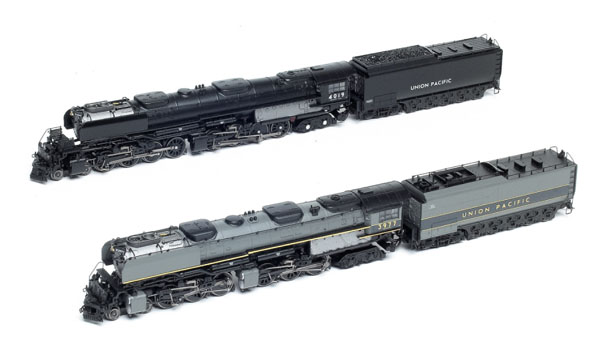
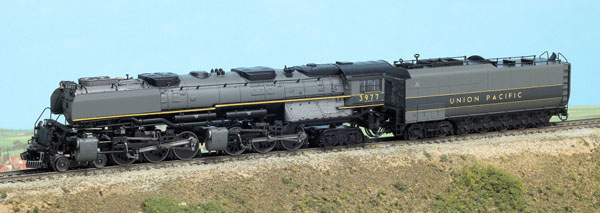

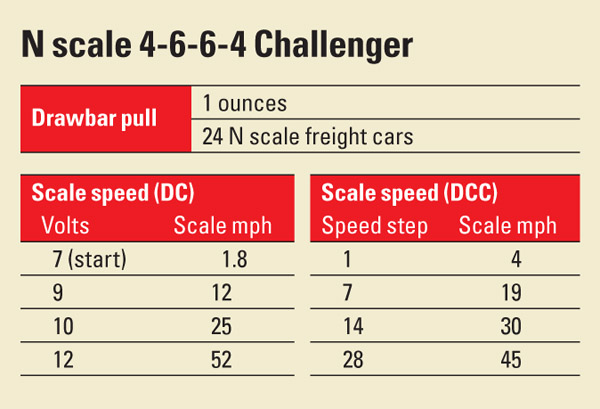
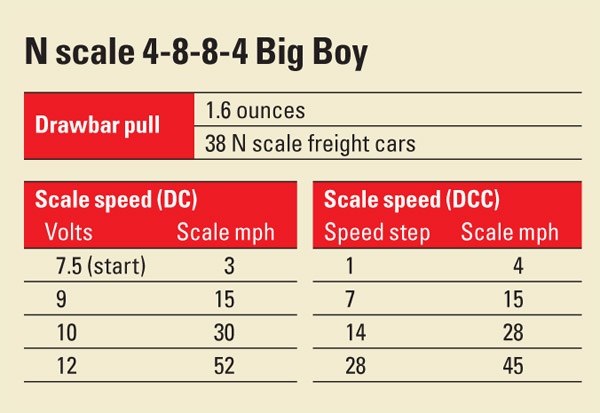
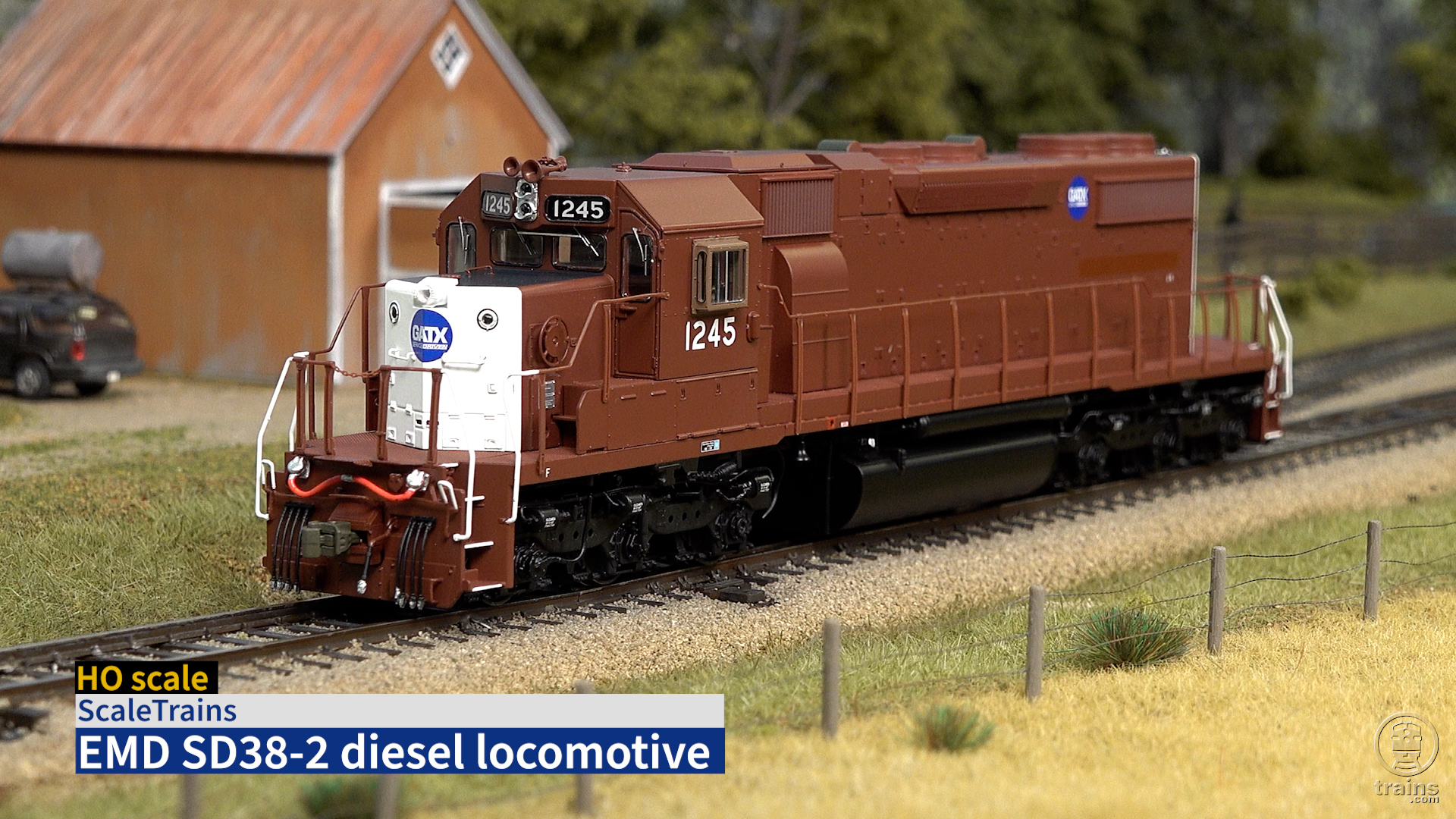
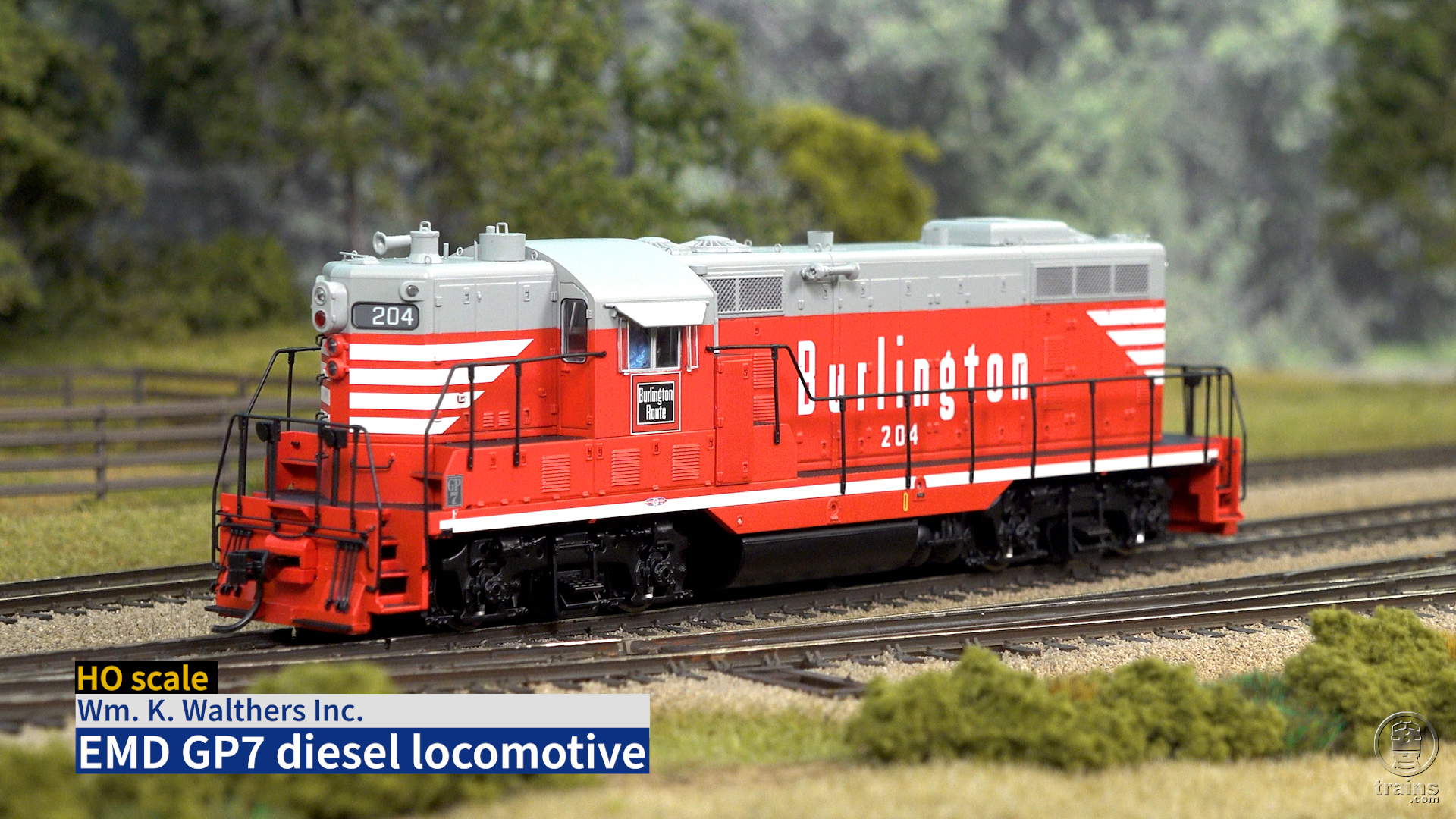
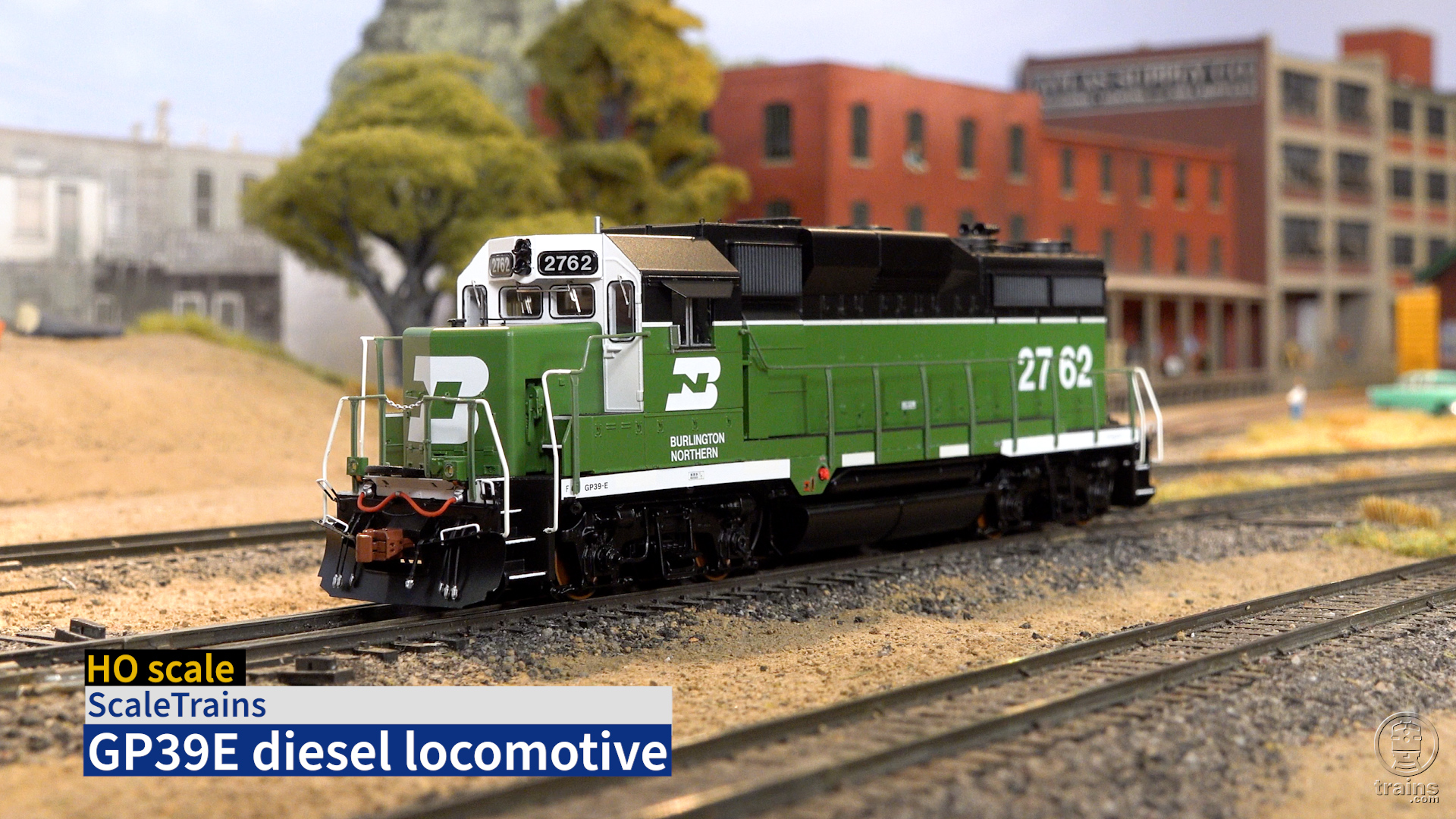
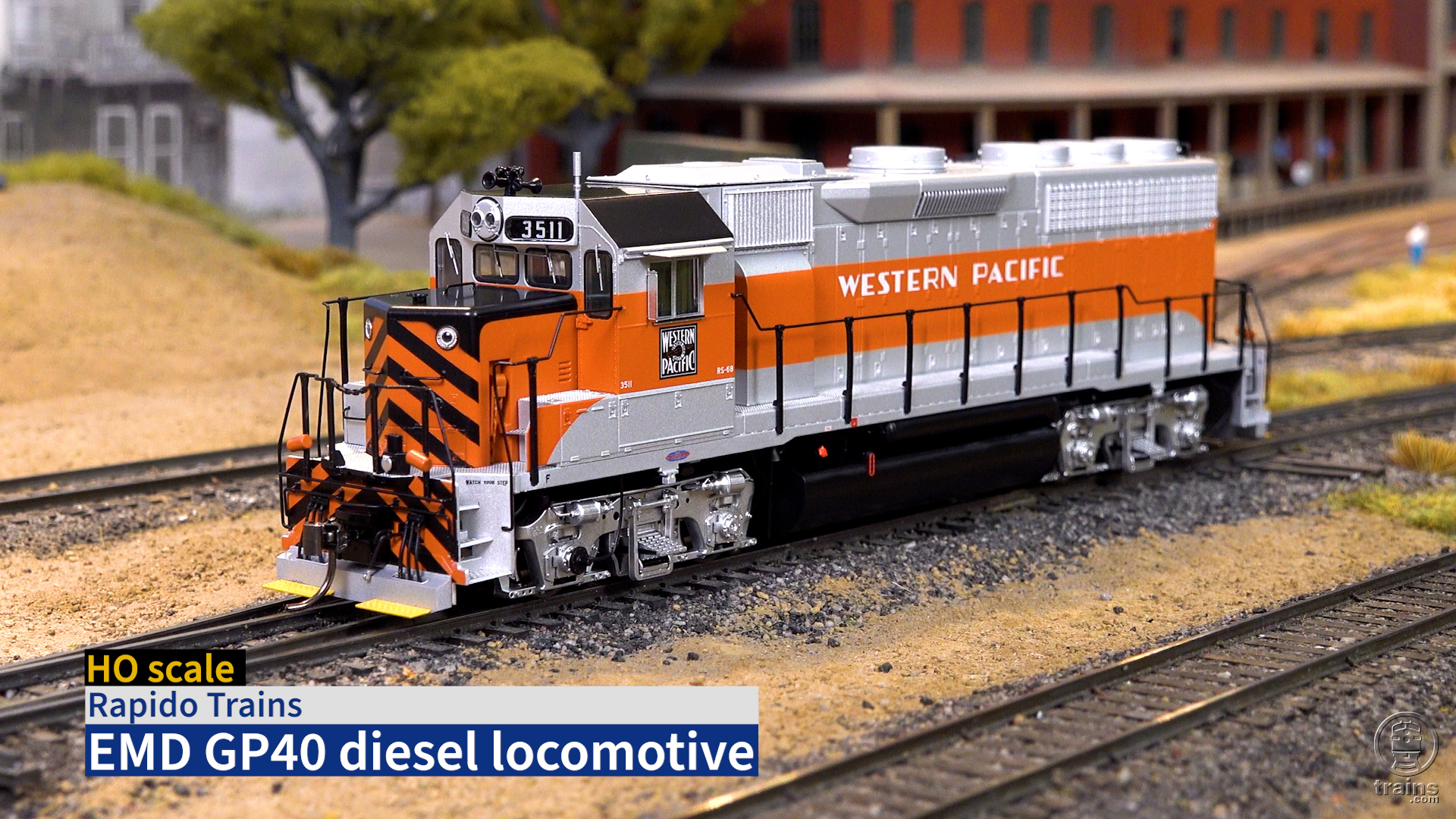
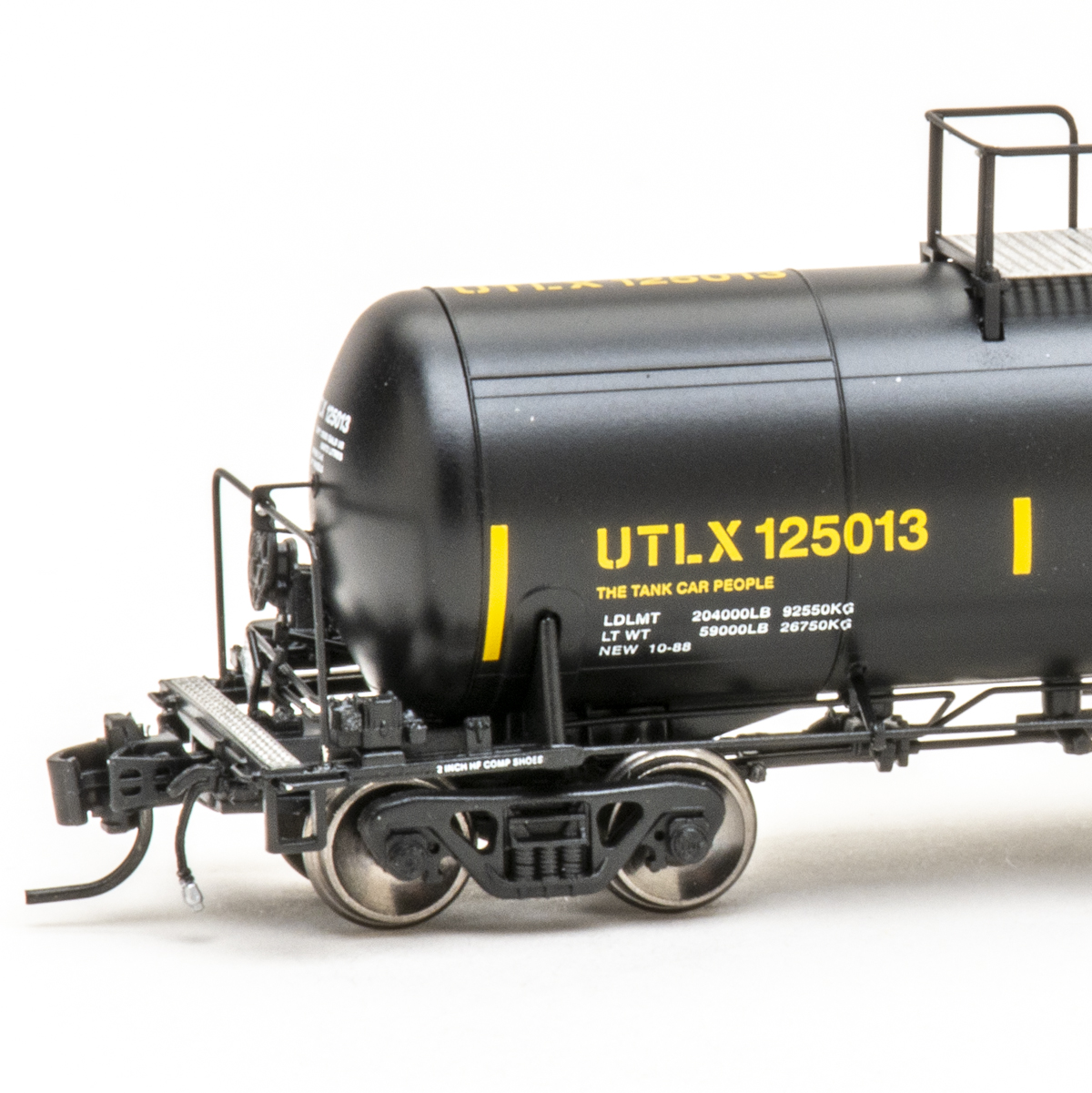





I bought one of the earlier versions way back in 2008, before converting to DCC, and for the moment don’t recall where I left the manual, now that I want to configure it. The current decoder seems to be the only one for which documentation is available. Is there a source somewhere for the original 2008 model’s DCC decoder settings? I’m not even sure that the manual that did come with the model had any extensive DCC settings guide anyway. I know it is the older model after reading the review seen above, I have the wireless remote control, which works only in DC mode. Would like to know how or if the speed control settings are changed. It doesn’t seem to obey the normal CV registers of 02, 05, and 06. I am perfectly willing to tolerate the way it is now, but would be nice to know if it can be modified. I am well aware of the limitations of the earlier decoders, one of the reasons why I stayed away from DCC for a long time. Now that there are more sophisticated deocders like those on the Bachmann K4 and the BLI M1s I would like to tame the 2008 Challenger’s Acela like acceleration in DCC mode.
Hello,
Really a great model.
unfortunately may layout has too sharp curves. But it is not a problem, I will … build an other one.
Waiting for the video.
Hello Mr. Quick,
We got a bit behind with this video. However, it has been shot and will be posted on the site early next week.
Thanks for reading and watching.
Dana Kawala
Senior editor
Model Railroader magazine
I have to agree with Mr. Quick. Magazine article said we could view a video of these locomotives on the website. No video. Slightly disappointed, since these two are my favorite engines of all time. If the video is here, it's very hard to find.
Disappointed that the video hasn't yet been posted.
To Al Featherstone –
Model whatever you like and don't listen to what people tell you you should model (or how). Years ago Model Railroader used to have a saying on the front cover "Model Railroading is Fun." Nowadays, everyone seems to be too serious about modeling the prototype and everything has to be just right. Balderdash! Check out the work of John Allen and his Gore and Daphited (Gory and Defeated. You see where I'm going with this?) RR, one of the original model railroad "gurus." He took things quite seriously, created his own railroad, built a layout that would be the envy of anything out there today, but added many touches of whimsy (he had a plastic stegosaurus posed as a yard switcher and scratchbuilt sway-backed boxcars that swayed as much as any horse did in the Three Stooges. Also, don't worry about getting it right (or perfect) the first time. I've read MR for 40 years and there have been countless examples of modelers you have changed things or even completely started over.
Hey, Model Railroader staff, what about the fun part of this hobby? I love your April Fools stories but everything else is just way too serious. The manufactures have helped get us here because we now have such high quality and accurate models at our disposal but it has come at the cost of just plain fun. I can run a 60 car UP grain train, all with different road numbers, but, at the same time stage a scene with Godzilla terrorizing my downtown. We have got to lighten up a bit.
Amazing looking Locos and with sound too. Well done Athearn.
As I stated before I'm new at this so the learning curve is vast.
My question is all the modelers model their layouts after various routes of existing lines. How does one select a route to follow.
I live in the Sacramento,California area which seems to be home to Union Pacific. They have a large switching yard in the Roseville area.
Thanks, AL FEATHERSTONE
My challenger (bought at the National Train Show) is an excellent performer. The sound is excellent for N scale and the locomotive operates well on grades and curves. Nice job Athearn. Now if you could only get the price down a bit.
Totally satisfied with the Big Boy. It impressed a lot of people at a recent train show hauling 32 coal wagons.Sound quality perhaps not as good.
I own a dozen of the first releases and they are the best sounding and pulling N Scale engines I've ever owned. I'm sure the new versions are just as good. Nice job, Athearn…!! Maybe Kato and the other steam engine manufacturers will catch on that N Scale deserves the same treatment as the larger scales.
Are those elephant ears on the Big Boy? Did UP ever put smoke lifters on any 4000s?
Big Boy Engine 4019 had smoke deflectors installed 1945 as an experiment to see if it would help deflect the smoke away from the engineer. The deflectors only lasted a short time and by that time a better exhaust was installed which not only helped with the smoke but better engine performance and made for a deeper distinctive sound. Note: There is an article Classic Trains magazine, winter 2010, about 4019.
good review I bought a n scale back in 2008 but it did not come with transmitter I had to purchase a mri black box not the same as your wireless transmitter. my changler n.
my ho bigboy & changler ho all running ok
Regards Ash Bence
from oz down under
This is certainly an exciting development. Based on conversations with people familiar with the earlier models these units will become scarce and collectable fast if they live up to expectations. Can't wait to see, hear, and have one of these historical marvels.
These are an amazing pair of quality locomotives! While these are truly magnificent …….I'm still asking for the C&O H-8 2-6-6-6 to be planned! A version could be offered in Virginian livery as well. Multiple runs in HO scale should be incentive to attempt the N scale version.
Perhaps the Challenger chassis could be adapted for the 6 wheel trailing truck with a prototypical tender.